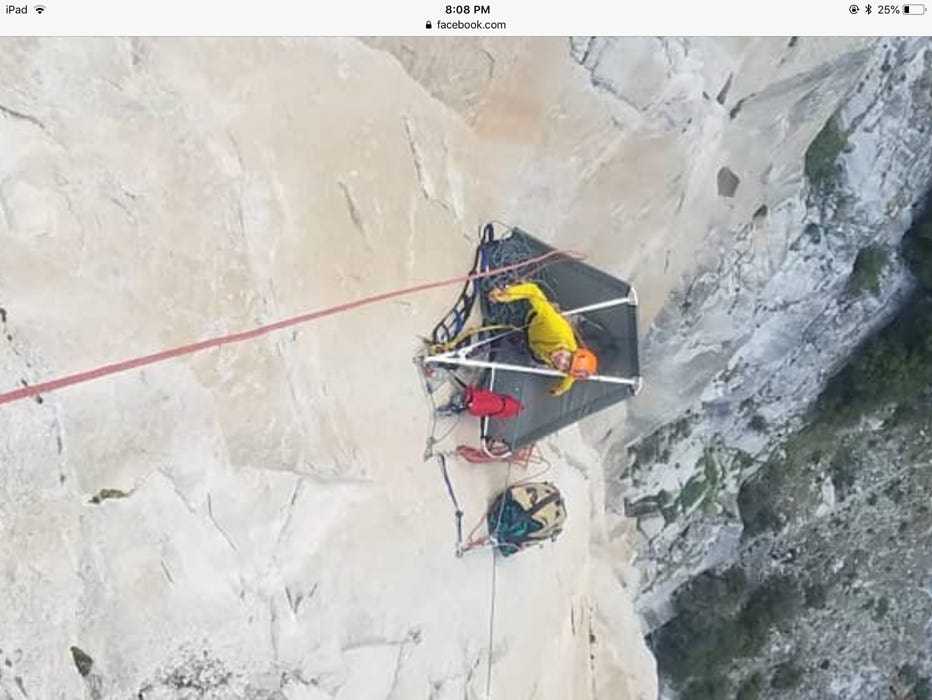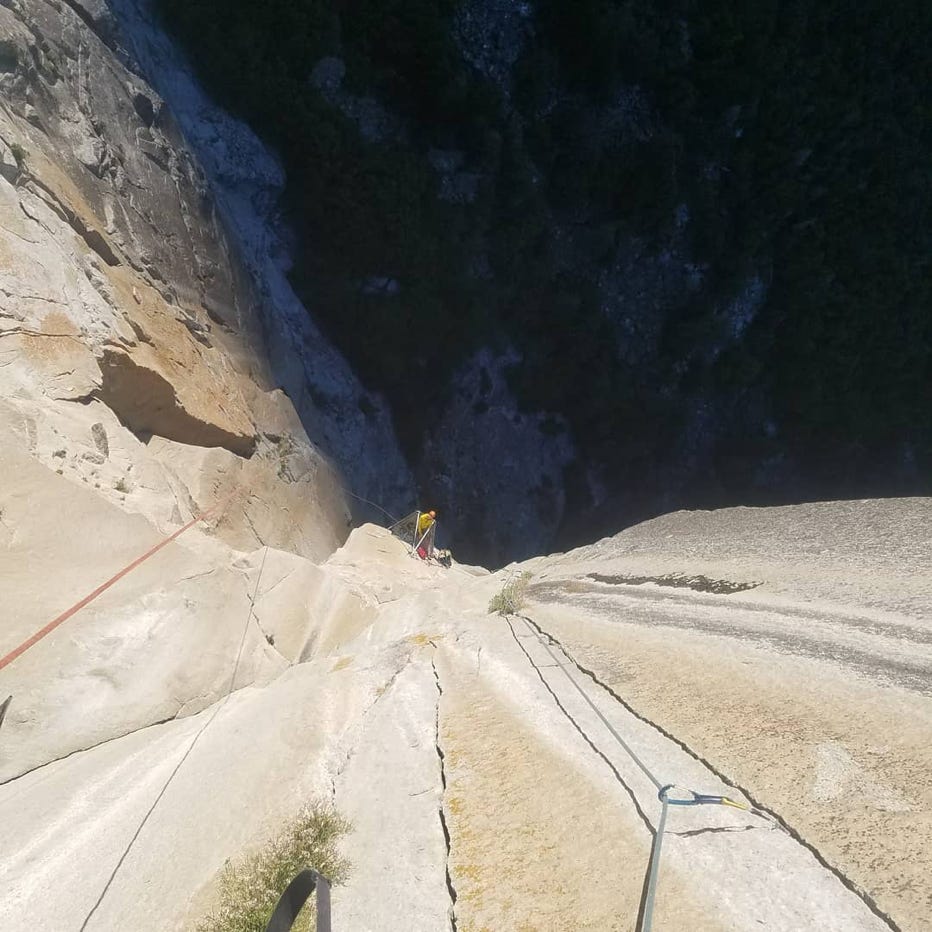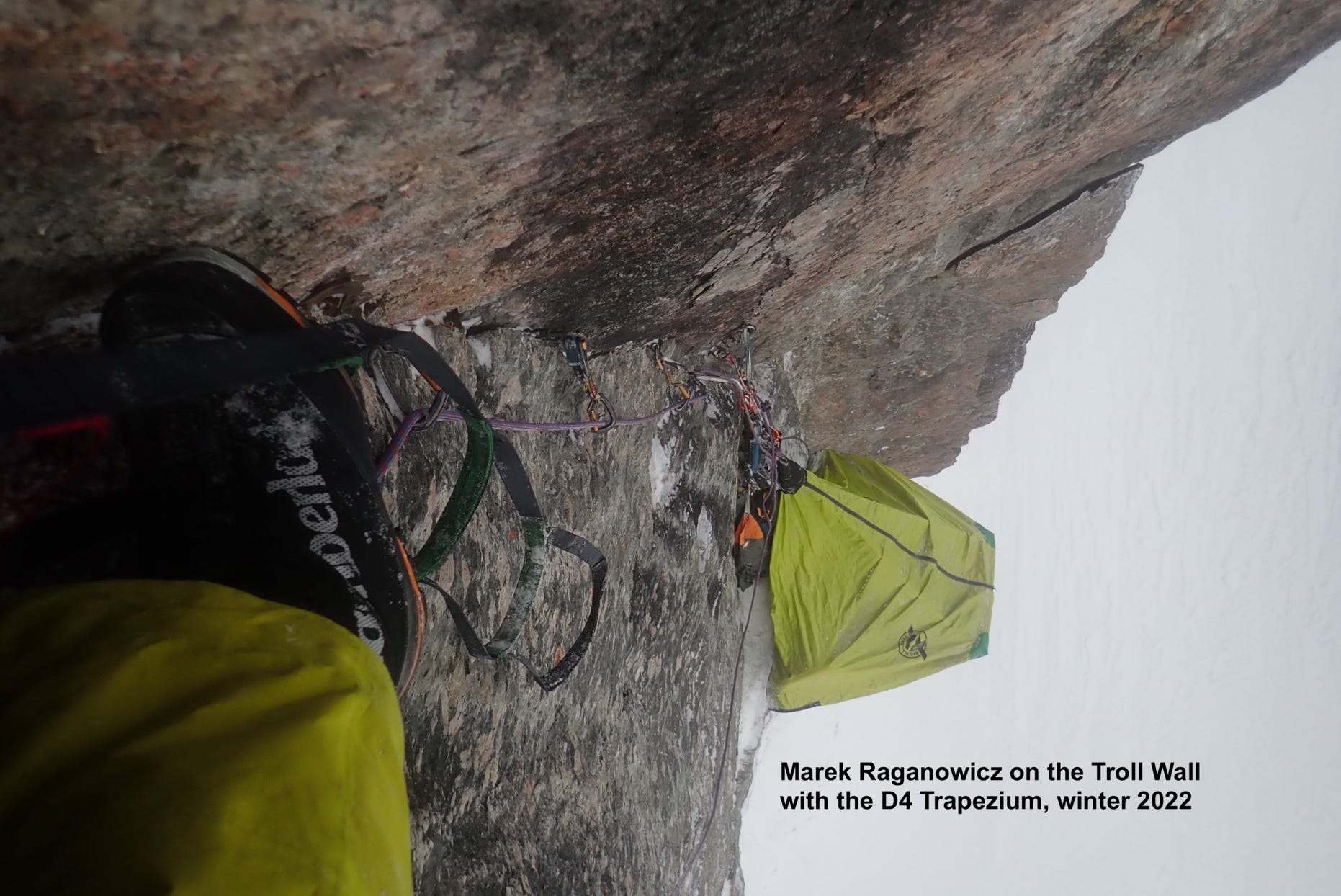
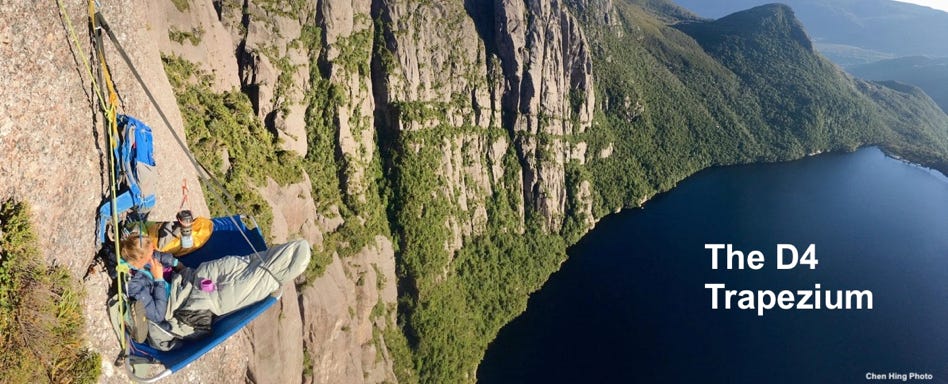
- D4 Trapezium: Custom Made in Australia.
- Contact John Middendorf at john@bigwalls.net
The D4 Trapezium! (2018 Design).
The successful 2017 D4 Kickstarter has funded exploration into new designs, and has spawned the D4 Trapezium, a whole new paradigm in folding ledge technology. The trapezium shape (Aussie for 'trapezoid') is the evolution of many triangular, rectangle, pentagon, hexagon, and curved portaledge explorations prototyped over the years; the trapezium-shaped ledge, with angled tubes and a more rounded shape offers new advantages, and provides the optimal shape for this new paradigm in folding ledge technology, the "1.5 ledge". This process of exploring led to the discovery that the trapezoid shape is the most ergonomic shape for the majority of the quality time spent in portaledges, hanging out, as the frame allows a backrest (the wall) and a full width structure to stretch out legs. With two people sitting up, the trapezoid shape offers plenty of extra space around the shoulders, yet no wasted dead space around the feet. The D4 Trapezium allows for comfortable sleep for one person on the diagonal, and decent sleep for two curled-up campers. The stability of the trapezoid shaped ledge, compared to a traditional full length portaledge, is like magic.
The D4 Trapezium uses proven frame concepts developed for the D4 full size ledge, and the result is the most compact folding, lightest, easiest-to deploy system that provides full shelter for two people for any situation on the vertical. My dream has always been to produce a sub-10 pound truly expeditionary ledge system, but all other designs including the ten-pound A5 Titanium portaledge that Xaver and I lived in on Great Trango Towers for two weeks, compromised some other aspect such as strength or flex, whereas the Trapezium is full strength, secure in any storm, lightweight, and fits into a daypack.
The Trapezium has the largest deployed area for a given packed size height for a sub-10 pound. The longest dimension of a given piece of gear is the key to its mobility, and the D4 Trapezium fits easily into a daypack, leaving plenty of room for the other essential gear for mountain adventures. As a 25" tall, 10 lb. system with fly (610mm, 4.6kg) , it can be added to those wild ultralight overnight adventures, places where one would not normally consider taking a portaledge, the D4 Trapezium is that light and compact.
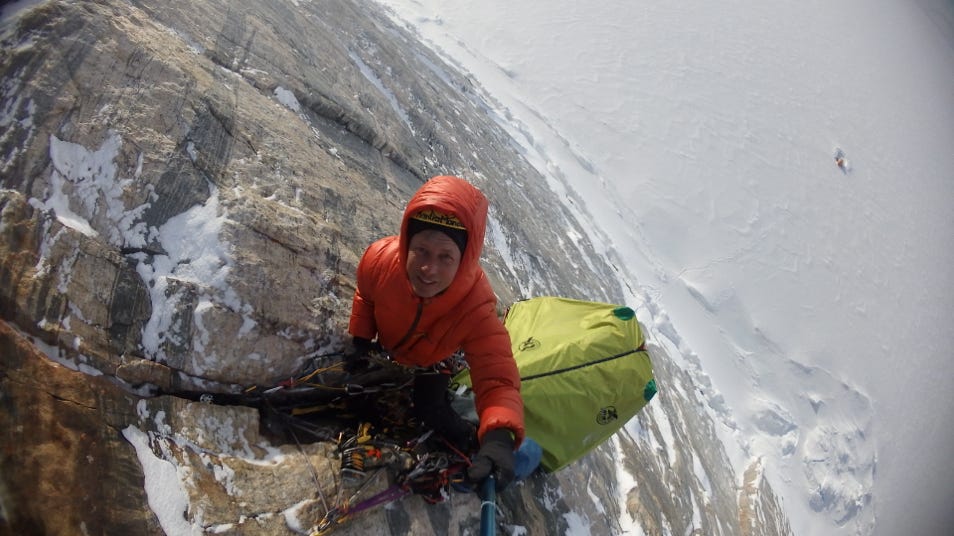
Origins of the Design
The A5/D4 design process is iterative. Once the initial purpose is determined and a new idea inspired, we build a bunch of prototypes, each with variations we would like to test. Then we reach out to the best climbers of the day, and provide them with the improved tools. Feedback in the 21st century has improved, and what took years in the 90's to incorporate user feedback, has turned to mere months thanks to live updates from the field as climbers accomplished their goals, new concepts are incorporated immediately. Finally, after we are satisfied our design has been well tested, meets all criteria and is fit for purpose, we begin production. 15 D4 full-size portaledge prototypes were involved with the evolution to the production version sold on Kickstarter. For the Trapezium, we are at Prototype #10, which is on its way (February, 2018) to incredible solo adventures with Marek Raganowicz in Baffin Island, a proven testing ground for the ultimate adventures. Though Marek found the full size D4 the lightest, strongest, easiest-to-set-up ledge ever, he requested a smaller version for his solo adventures. Instead of the typical single rectangular frame, which due to its narrowness is inefficient and less stable, we investigated other shapes and sizes. Also in 2017, we were in close touch with Rob Miller, who was spending extended time on his new free route on El Capitan, and providing us with live updates as he and his partner used two D4 portaledges. Rob came up with the idea of a "1.5 ledge", recognising that packed size is what makes a ledge more likely to be immediately accessible based on how he more frequently deployed the compact full size D4 ledge compared to what he was using before, and we discussed various configurations. When Robbie Brown took the full size D4 portaledge (without fly) on a one-day speed ascent of a Yosemite big wall, and raved about their comfortable hang-out spot really made their ascent faster, easier, and safer, we realised that a compact, light platform could be used in a number of situations where climbers don't normally think of bringing a portaledge (such as one-day speed ascents of big walls!). Finally, discussions with Andy Kirkpatrick, who lamented the discomfort with sleeping on a chopped out platform on alpine routes to perch a tent on routes like the Eiger in winter, inspired us to create a compact, two-person survival system that could fit into a daypack. The result is a new tool that will enable a wide variety of new adventurous endeavours into the wild.
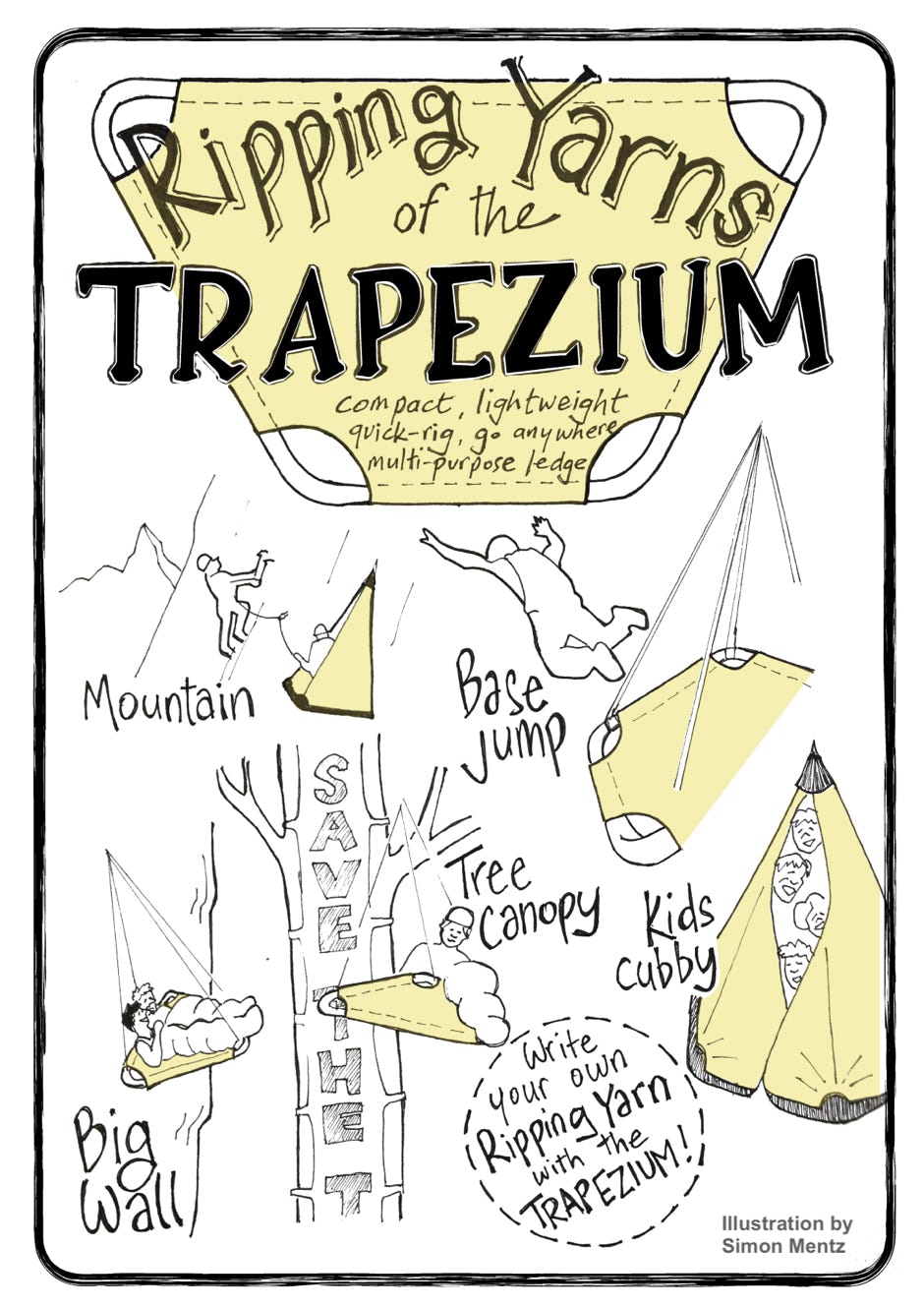
Because of its packability, ease of set-up, and increased stability, people are finding many new uses for the D4 Trapezium!
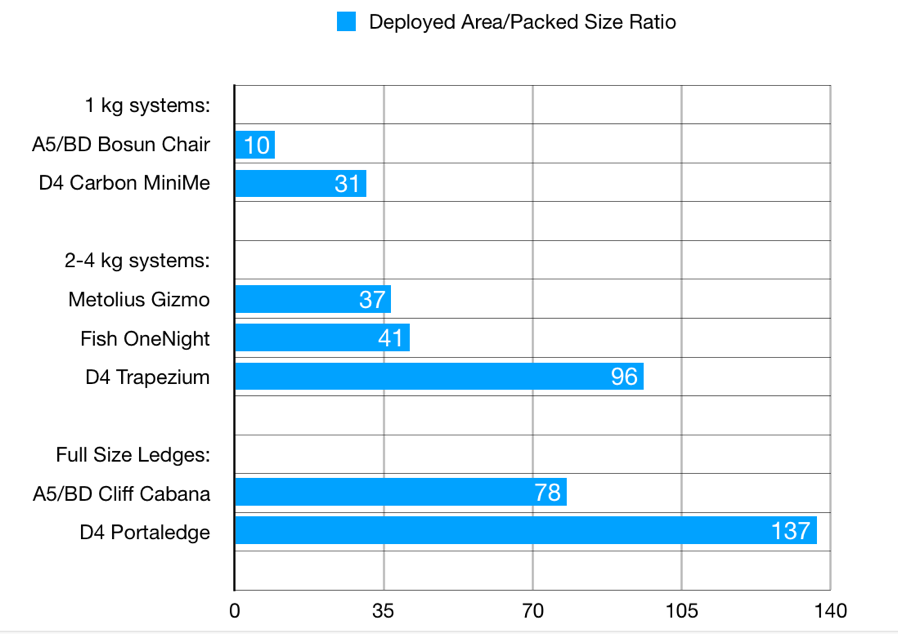
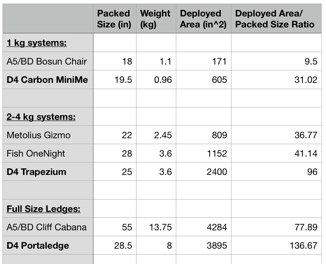
Above: D4 ledges are designed for packability. The "packed size", rarely considered, is what really makes a portaledge portable! The Trapezium packs to 25" x 8" x 3.5", weighs about 5 kgs., and provides 2400 sq.in. of usable space.
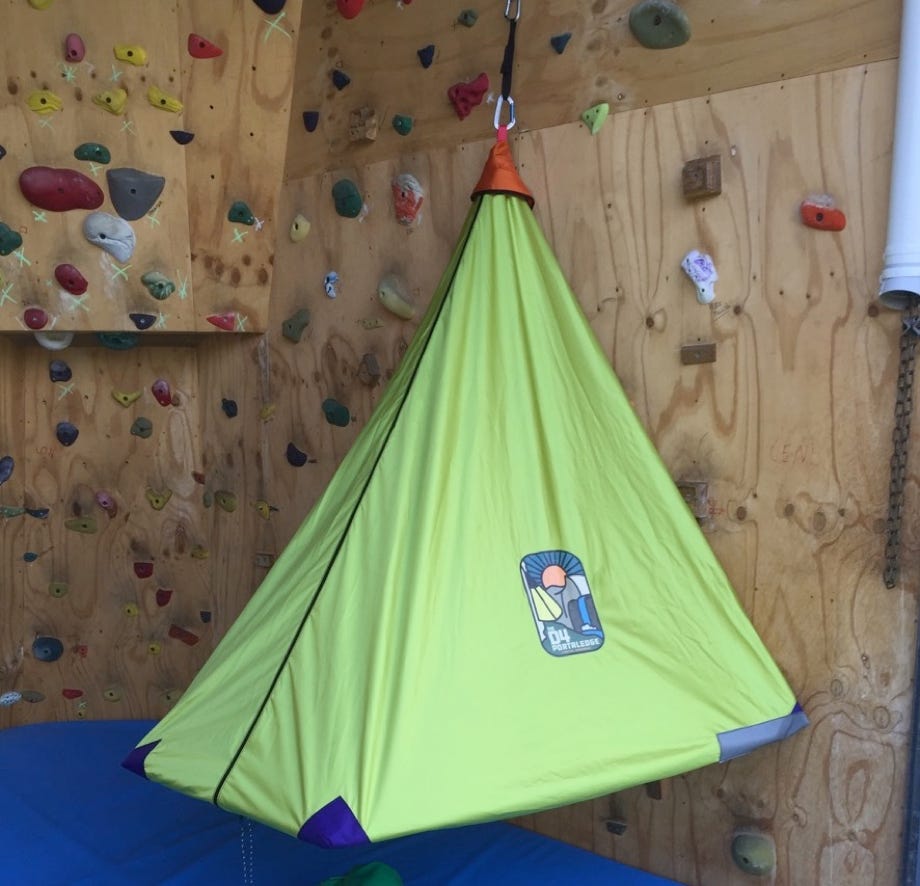
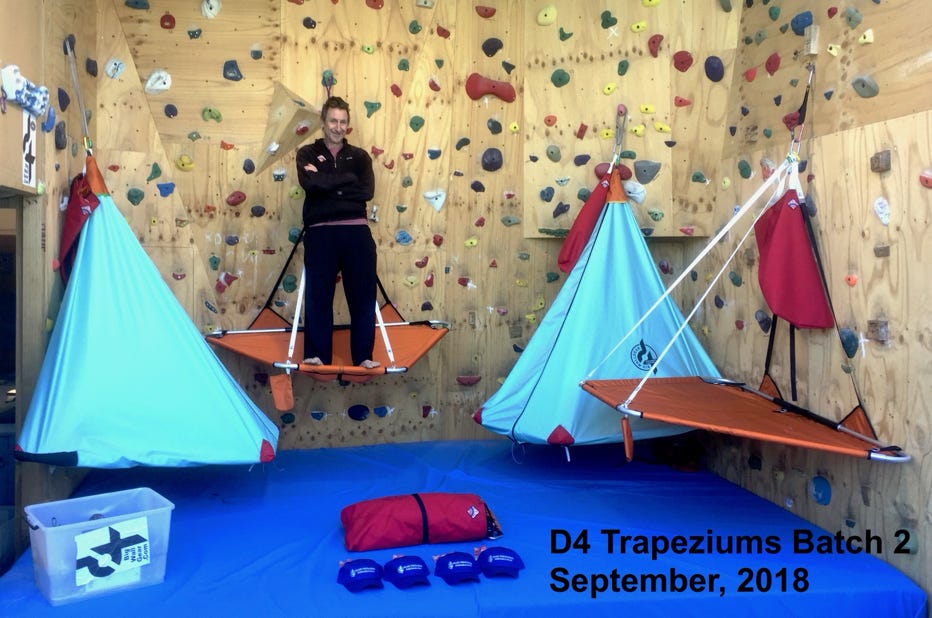
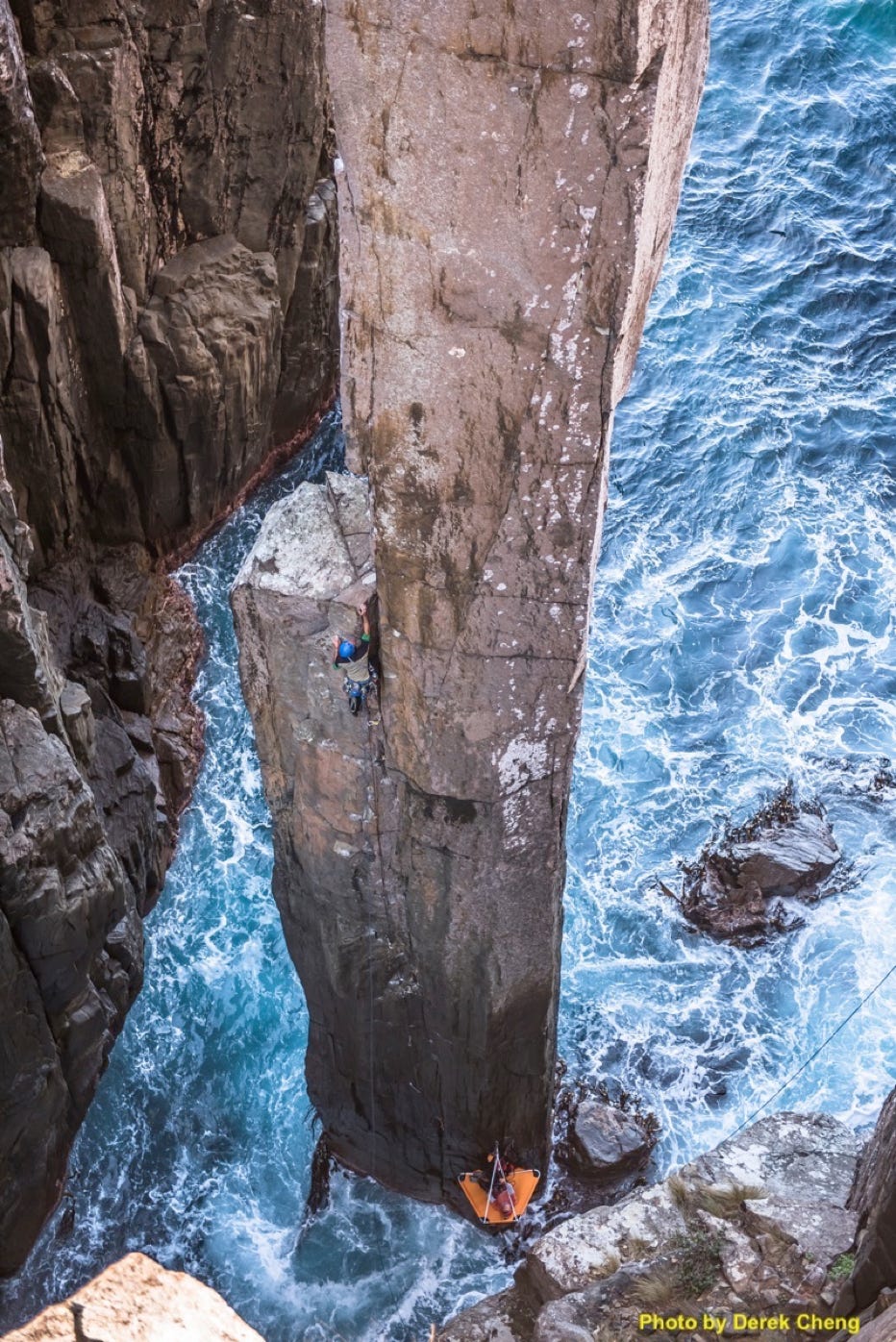
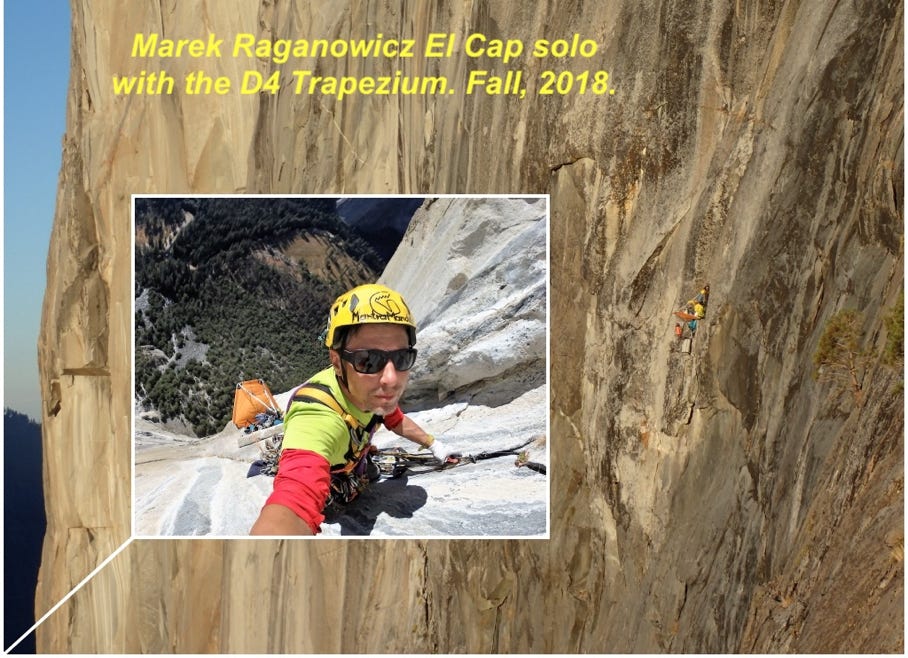
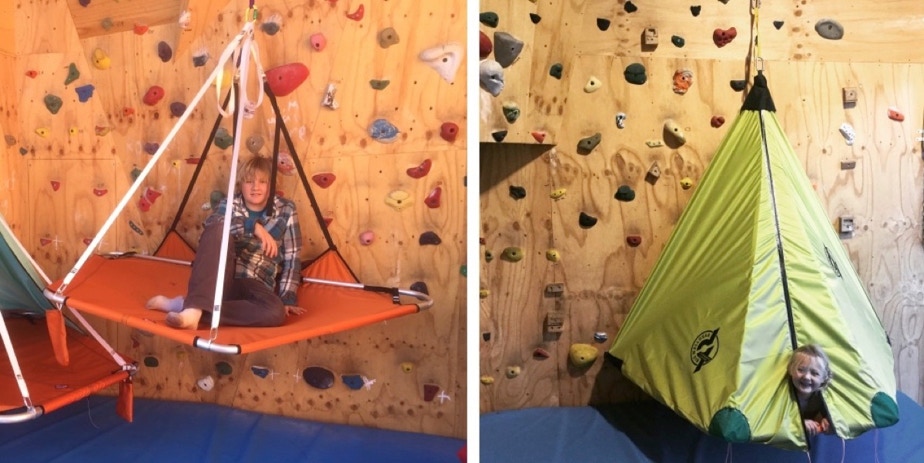
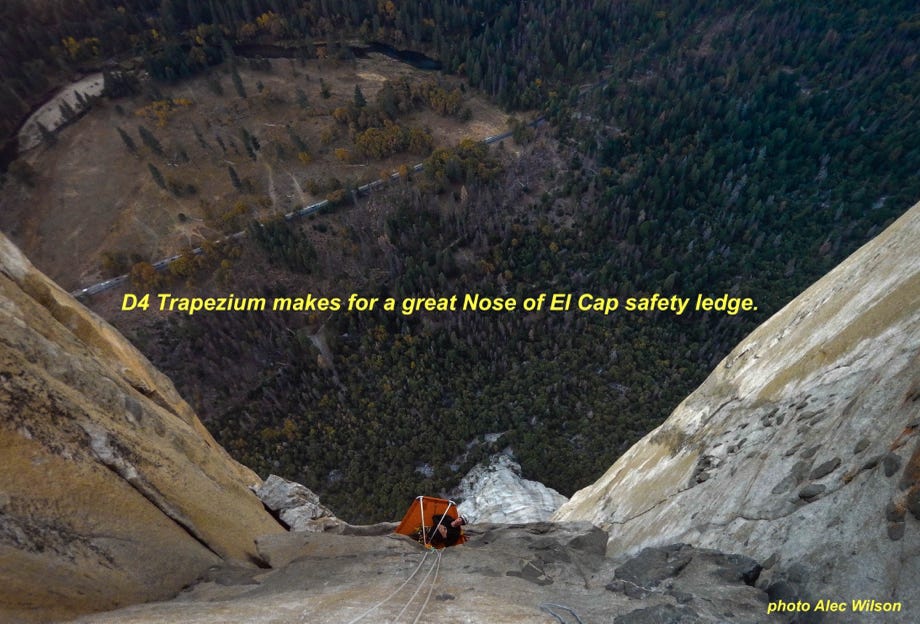

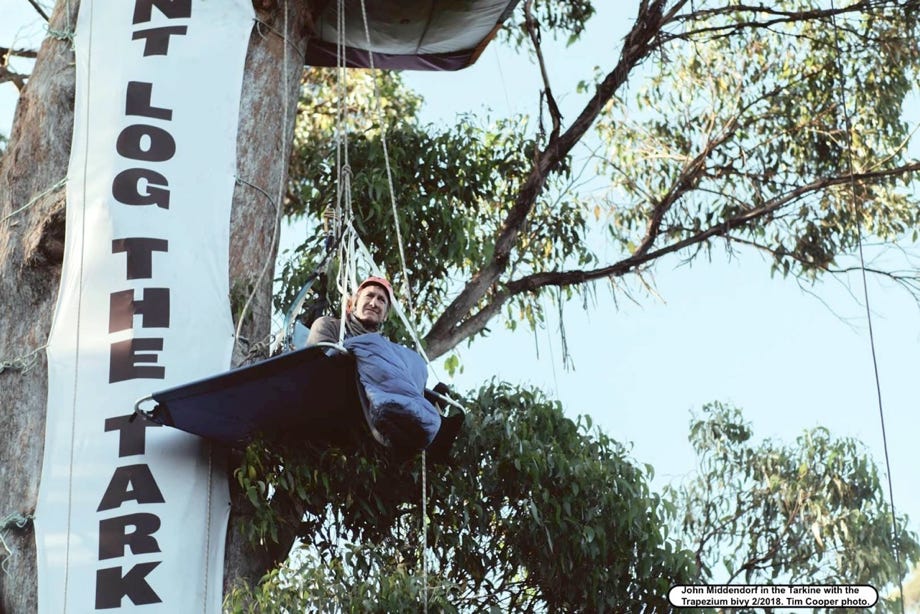
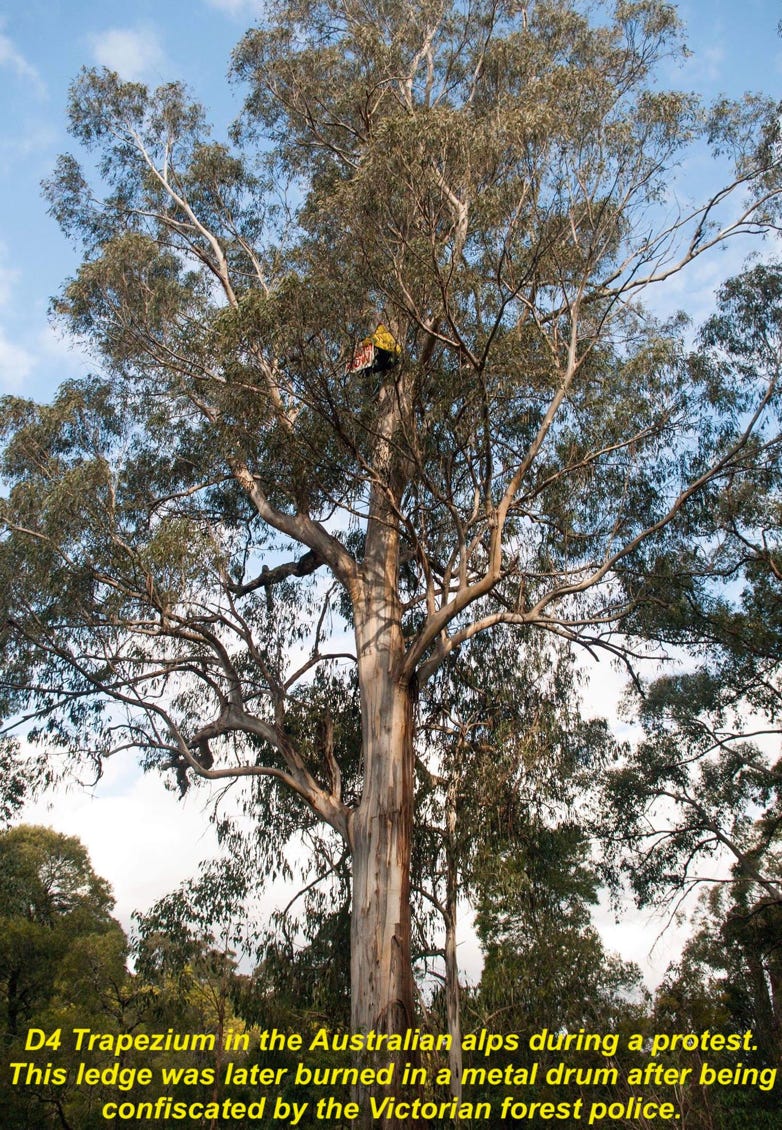
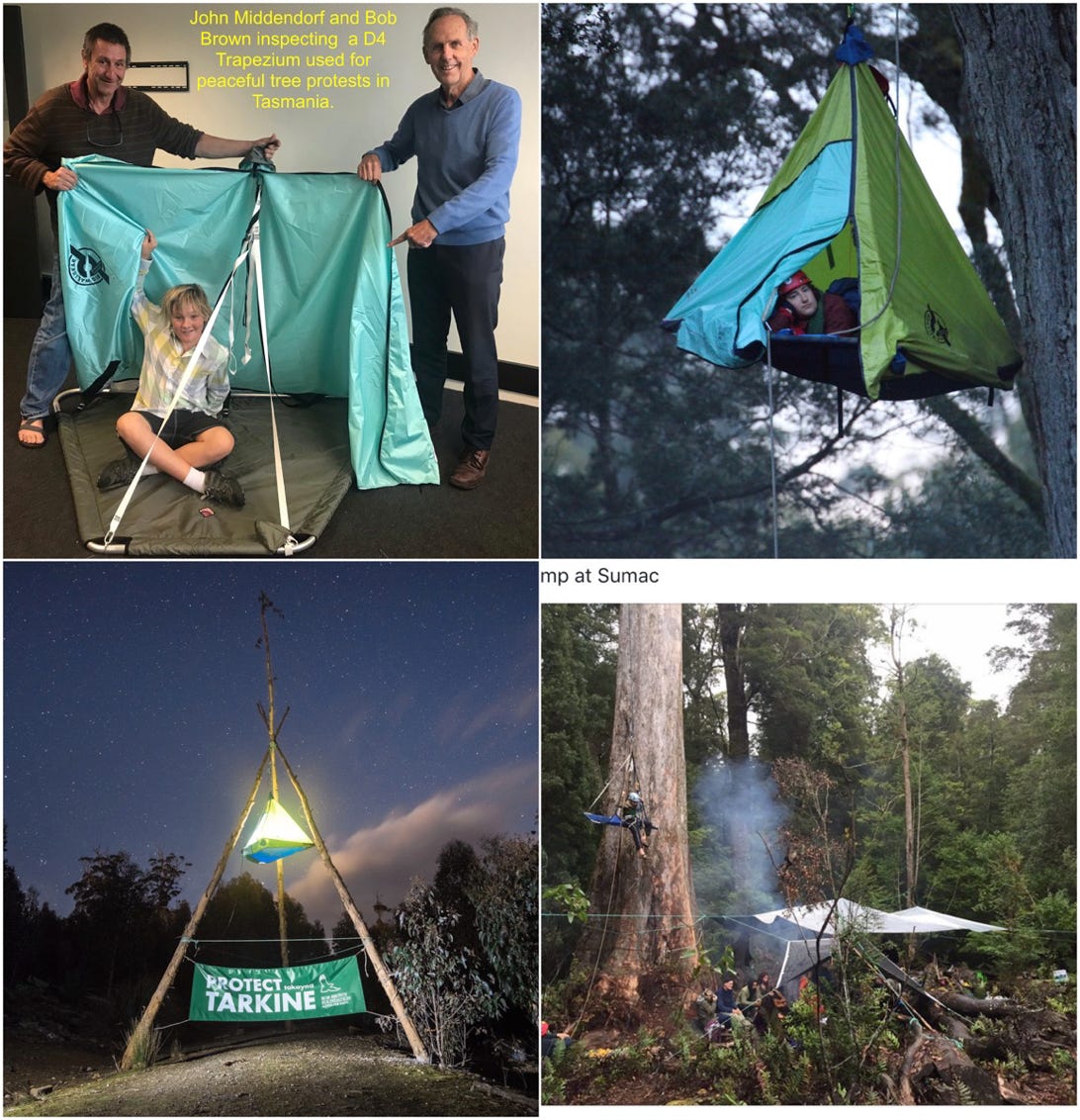
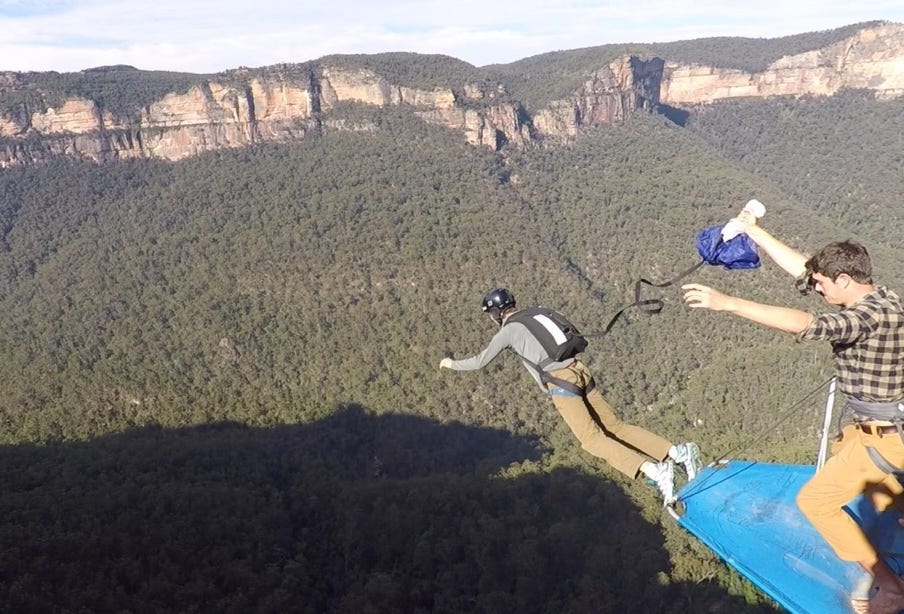
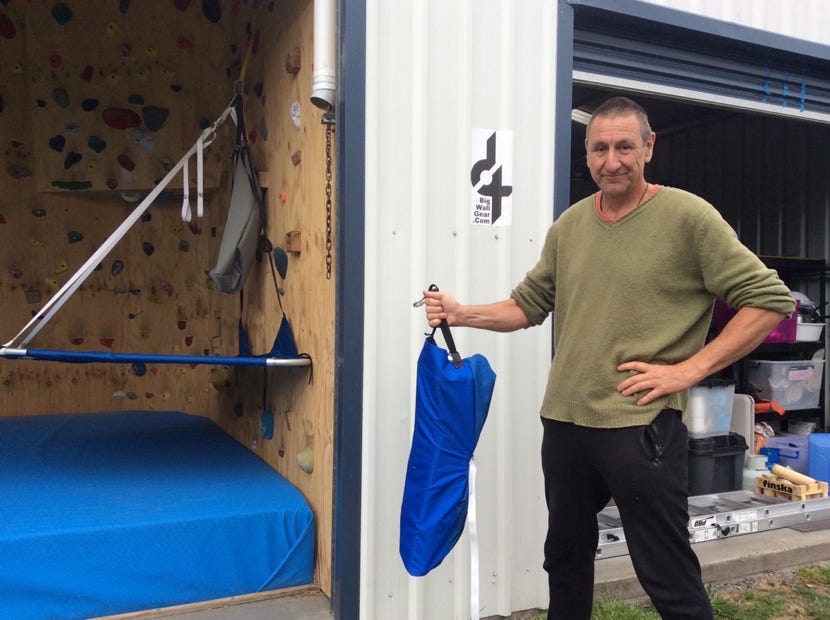
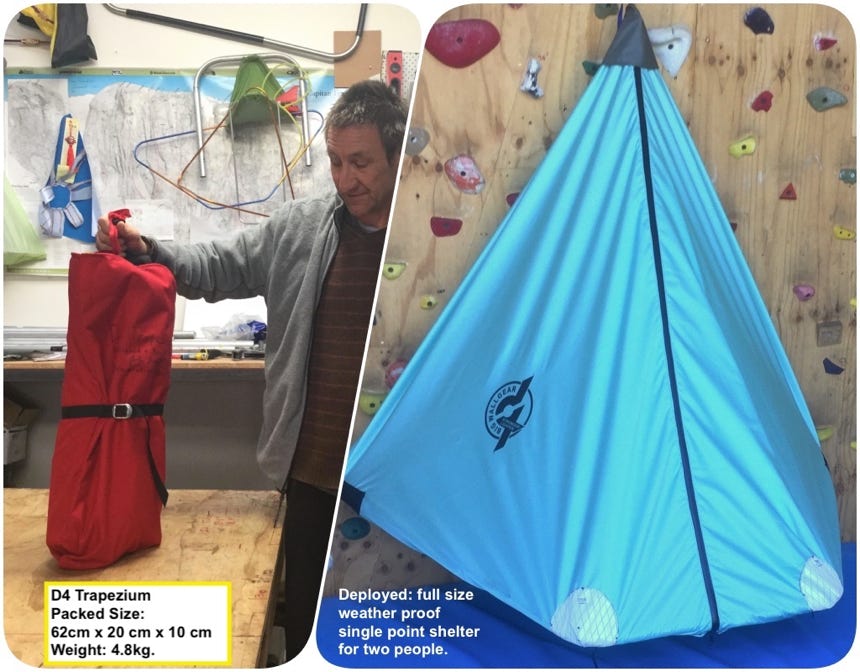
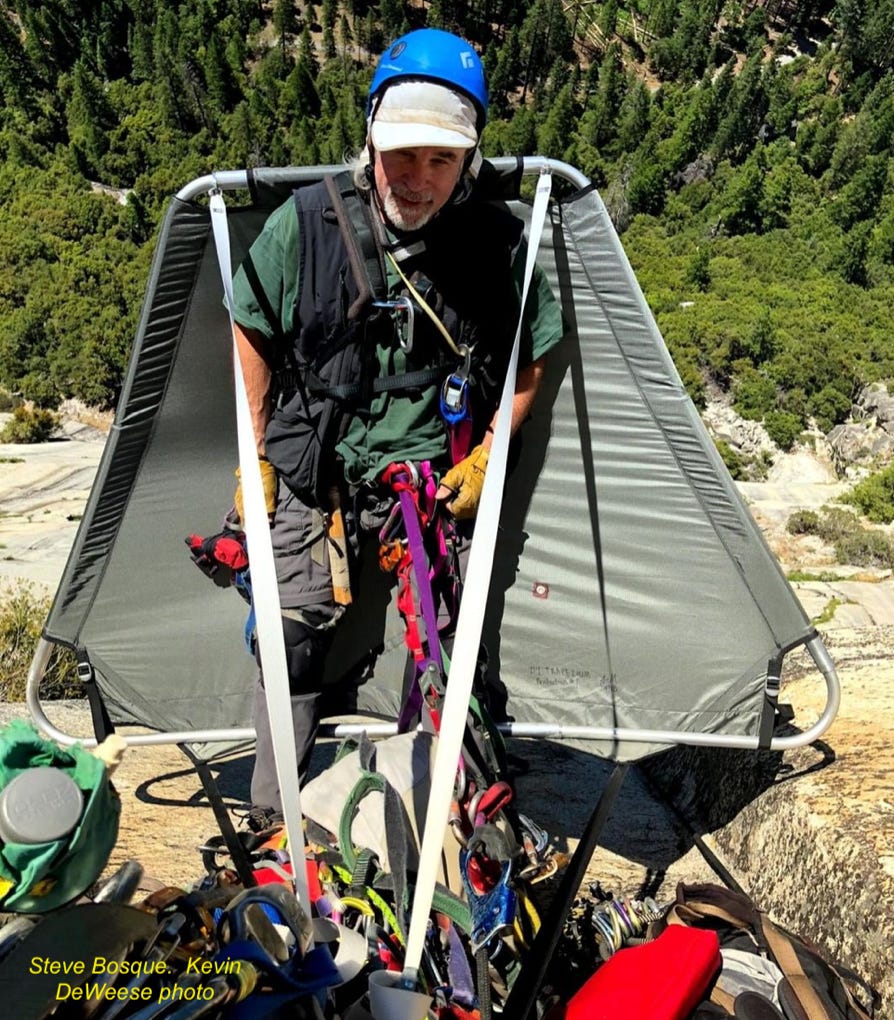

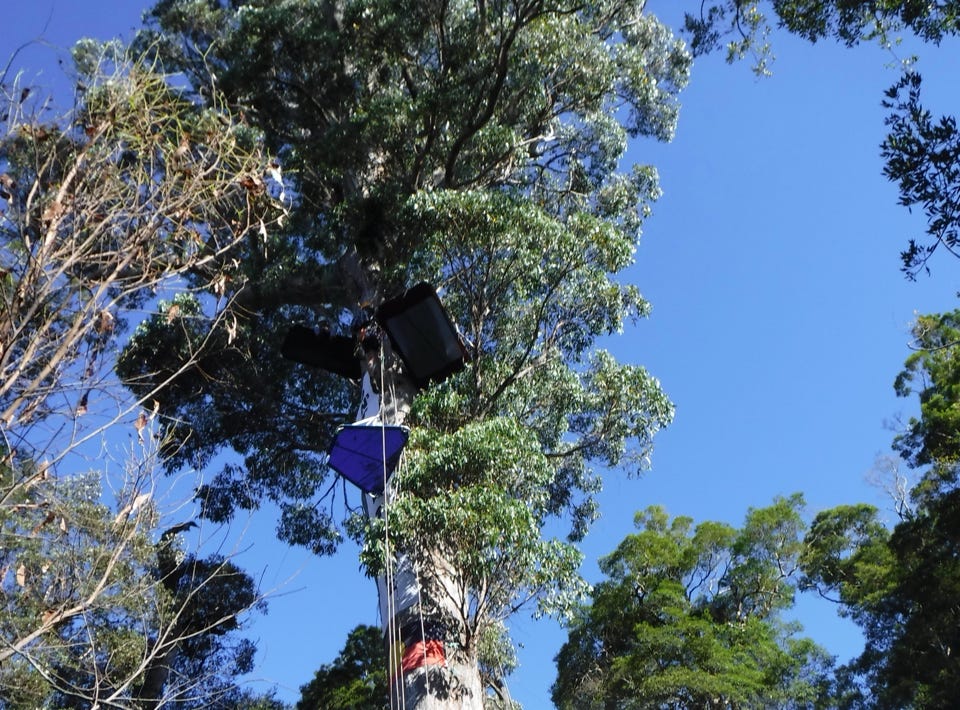
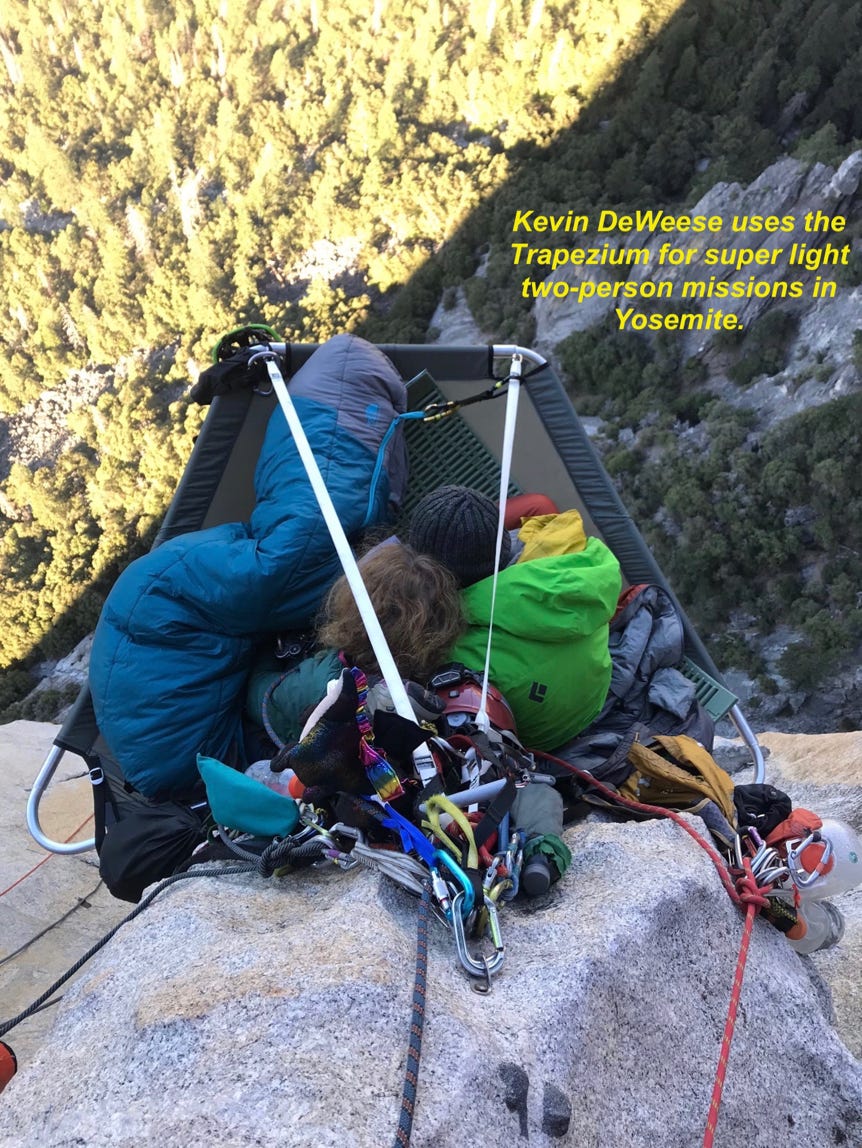
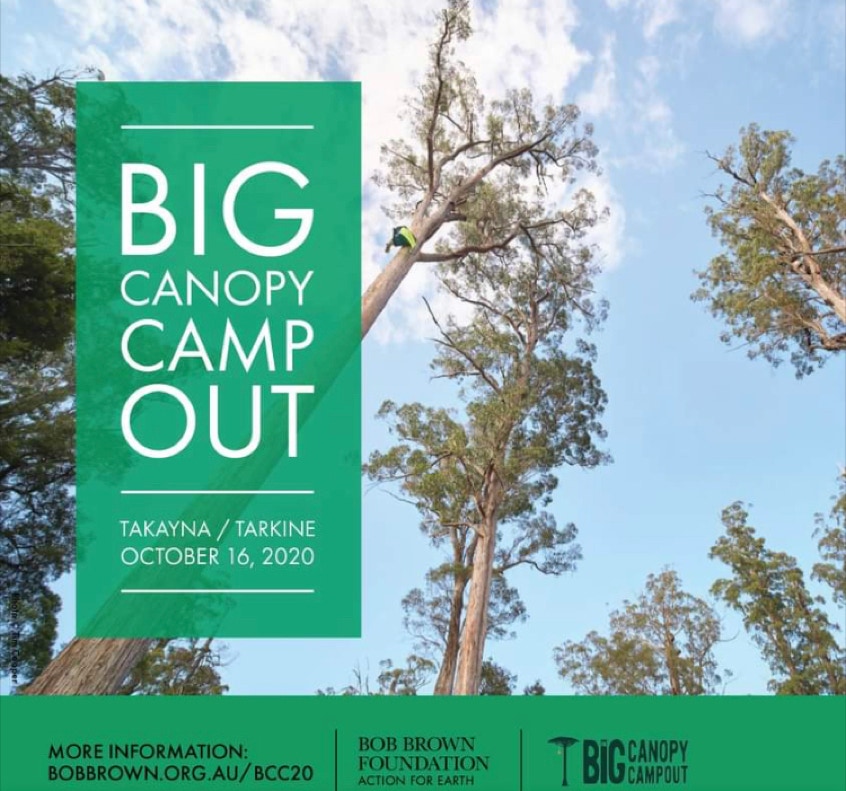
Tarkine Trapezium testing: (uncut footage for BBF--Start at about minute 10 to avoid wilderness rant):
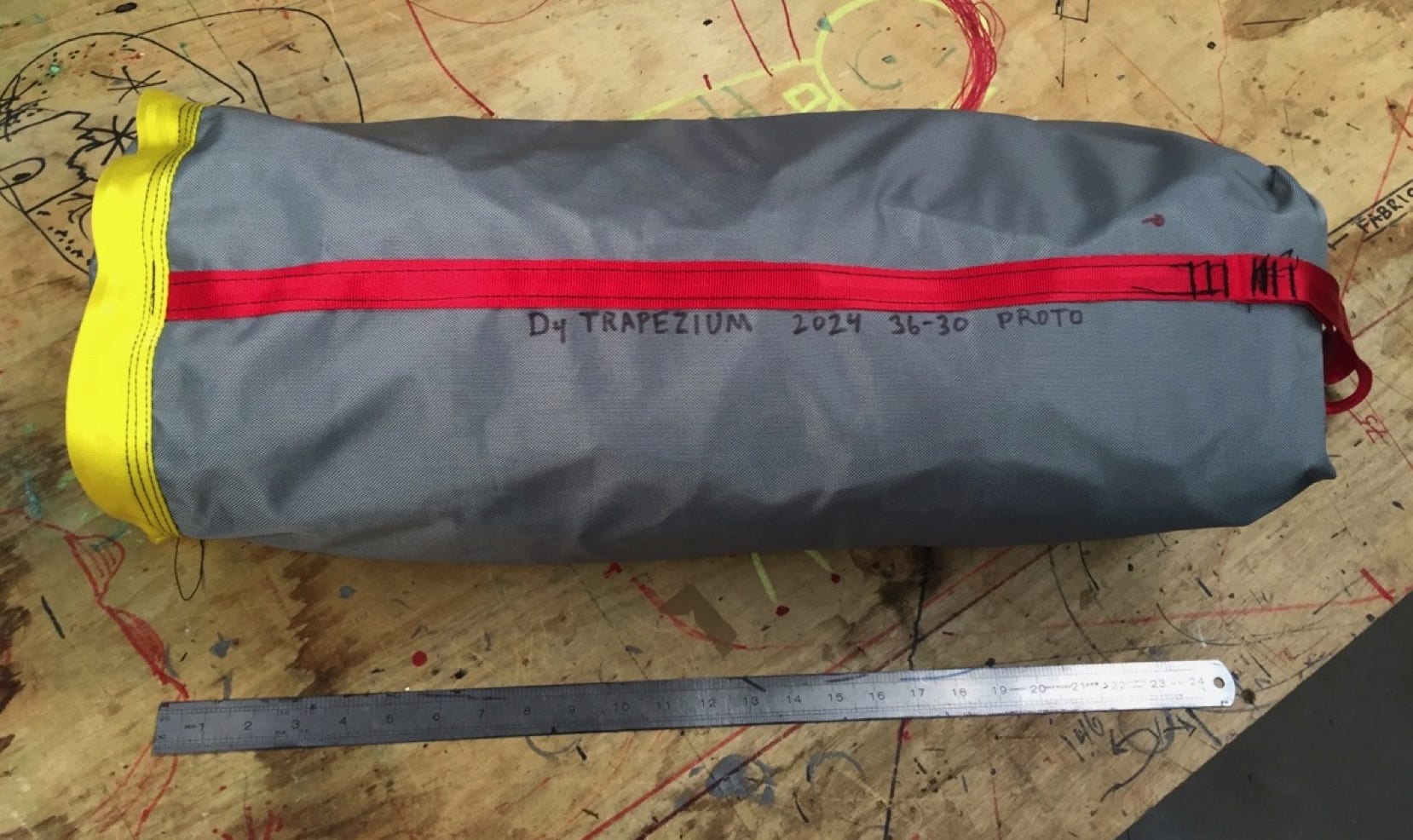
PACKING THE TRAPEZIUM by maestro Chris Wallace
